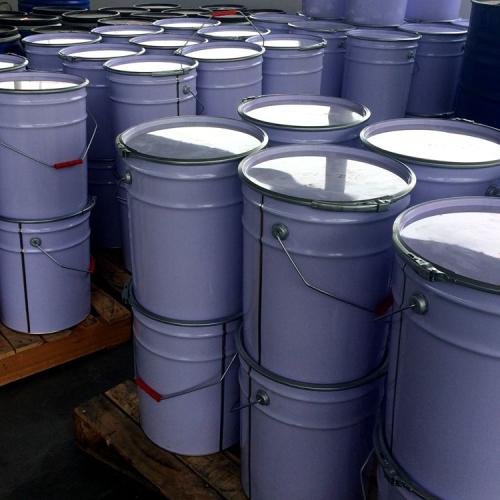Thermosetting acrylic resins are divided into several categories according to the way of production.
1. Emulsion polymerization. It is synthesized by reacting monomers, initiators and distilled water together. Generally, the resin is a 50% solids emulsion, and is a latex solution containing about 50% water. The emulsions formed are generally milky white bluish (Dingdal phenomenon), and the glass transition temperature is designed according to the FOX formula. Therefore, this type of emulsion has a large molecular weight, but the solid content is generally 40% to 50%. The production industry requires accurate handling, due to the use of water as a solvent, environmentally friendly emulsion.
2. Suspension polymerization. It is a relatively complicated production process and is a method used as a solid resin. For the solid acrylic resin, a methacrylate with a methyl group is selected for reaction polymerization. The acrylates with methyl groups generally have a certain functional group, and the polymerization reaction in the reaction kettle is not easy to handle, and it is easy to stick to the blasting pot. The process is to put the monomer, initiator and auxiliary into the reaction kettle and then put it into distilled water to reverberate. After a certain time and temperature response, wash it again, then dry it, filter it, etc. The production control of its products is more strict. If there is no place in the center, the products that come out will have a certain impact. Mainly reflected in the difference in color and molecular weight.

3. Bulk polymerization. It is a more efficient production process. The process is to put the raw materials into a special plastic film, and then react them into agglomerates, take out the pulverization, and then filter them. The purity of the solid acrylic resin produced by this method is the highest in all production methods, and the product is stable. Sex is also the best, and its shortcomings are also full. The acrylic resin obtained by bulk polymerization is not so strong in solubility in a solvent, and sometimes the same ratio of the same monomer is difficult to be dissolved several times by suspension polymerization, and the dispersibility of the pigment is not as good as that of the suspension polymerization acrylic resin.
4. Other methods of polymerization. The solvent method reacts, and when the reaction is repeated, the solvent is used together to make the intermediate substance, and the solvent is removed after the reaction is completed.
Article from thermosetting acrylic resin manufacturers:http://www.canadanadar.com.cn/
-
07-11
Five application areas of waterborne PU resin
Material compounding: bonding and compounding of PVC, PP, ABS, XPE, PU, PET, wood, cloth, paper and other materials;Automotive interior rubber: automotive interior coated rubber (door panel, instrumen
-
07-11
What are the precautions for using water-based glass baking resin?
1. When working, keep the work site clean and dust-free, the site temperature should be higher than 8 °C, and the relative humidity is lower than 85%;2, all material configuration ratios are weight ra
-
07-11
Thermosetting acrylic resins are divided into several categories according to the way of production.
1. Emulsion polymerization. It is synthesized by reacting monomers, initiators and distilled water together. Generally, the resin is a 50% solids emulsion, and is a latex solution containing about 50%
-
07-11
What are the advantages of water-based glass baking resin?
After the glass lacquer is decorated with the glass products, it can present glass processing products with different colors and rich colors, which are favored and appreciated by consumers. Water-base